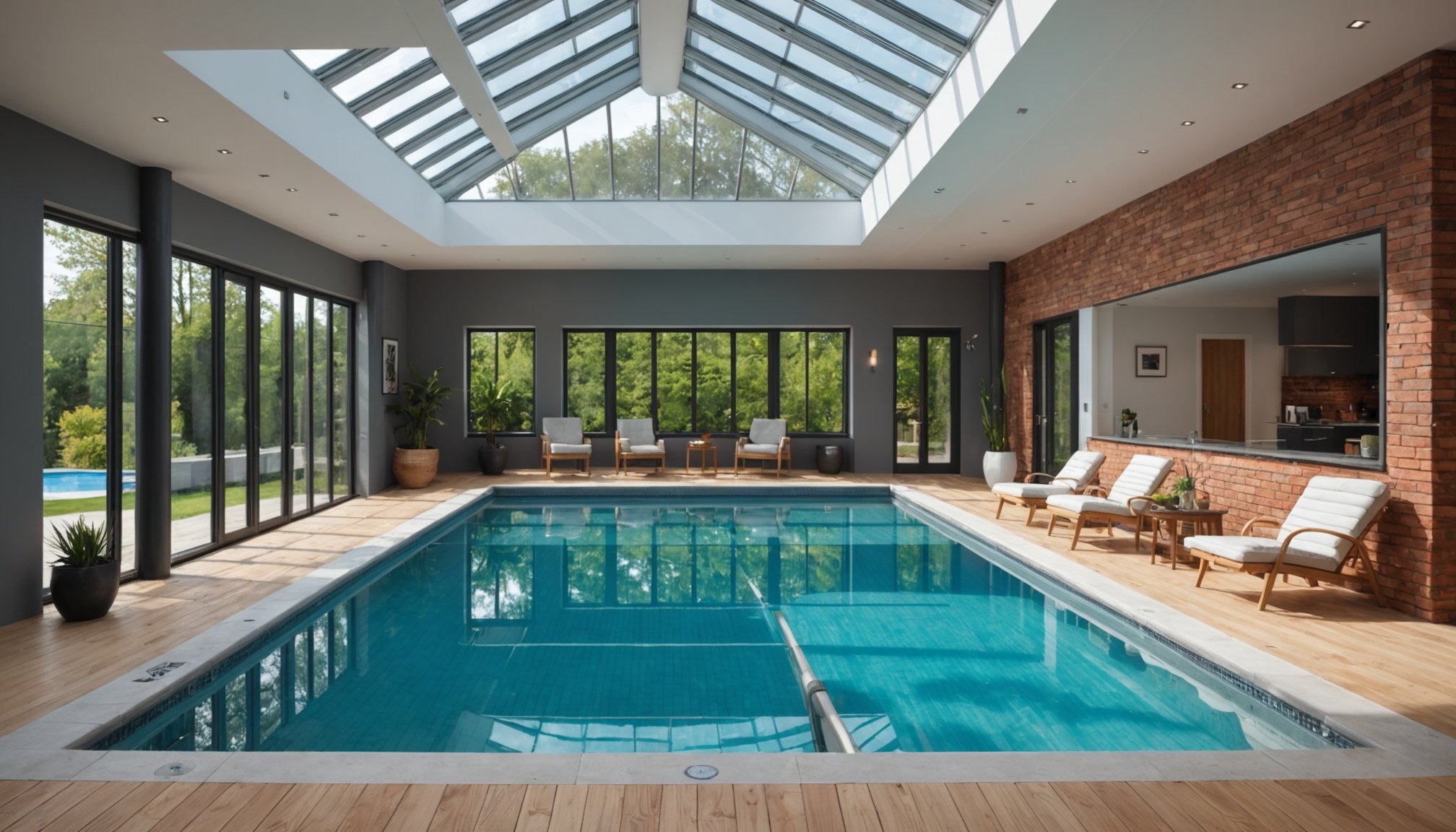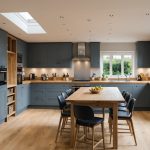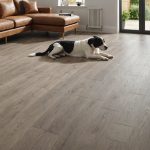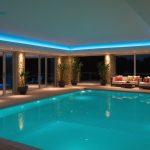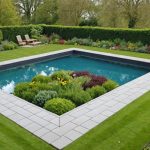Transforming the Soundscape: Tips for Improving Indoor Swimming Pool Acoustics in Your UK Home
When you think of an indoor swimming pool, the first things that come to mind are the refreshing waters, the sleek design, and perhaps the vibrant atmosphere. However, one often overlooked but crucial aspect is the acoustic environment. The soundscape of your indoor swimming pool can significantly impact your overall experience, from the echo of children’s laughter to the hum of the pool equipment. Here’s a comprehensive guide on how to improve the acoustics of your indoor swimming pool, ensuring a more enjoyable and comfortable space for everyone.
Understanding the Acoustic Environment
Before diving into the solutions, it’s essential to understand the challenges posed by an indoor swimming pool’s acoustic environment. These spaces are notorious for their echoey and reverberant sound, which can be both annoying and detrimental to the overall ambiance.
Additional reading : Transforming Your UK Garden: Creative Ideas for Seamless Pool Cover Designs That Harmonize with Nature
The Science Behind the Sound
The primary issue with indoor pools is the hard, reflective surfaces such as tile, concrete, and glass. These surfaces bounce sound waves around, creating a cacophony of echoes and reverberations. This is particularly problematic in the frequency range of human speech and music, making it difficult to communicate or enjoy any form of audio.
The Impact on Your Environment
The adverse effects of poor acoustics are not just limited to the auditory experience. They can also impact the overall comfort and usability of the space. For instance, high sound levels can lead to fatigue and stress, while poor sound clarity can make it difficult to enjoy activities like swimming lessons or pool parties.
Also read : Transform Your UK Swimming Pool Atmosphere: Mastering Mood Lighting with Color LED LEDs
Assessing the Noise Impact
To improve the acoustics, you first need to assess the current noise impact of your indoor pool.
Identifying Sound Sources
Here are some common sound sources in an indoor swimming pool:
- Pool Equipment: Pumps, filters, and heaters can generate significant noise.
- Swimmers and Spectators: Laughter, conversations, and splashing create a constant din.
- Echoes and Reverberations: The hard surfaces reflect sound waves, amplifying the noise.
Conducting an Impact Assessment
To get a clear picture, you might want to conduct a simple sound level measurement using a sound level meter. This will help you identify the peak sound levels and the areas where the noise is most pronounced.
Solutions for Improving Acoustic Performance
Improving the acoustic performance of your indoor swimming pool involves a combination of strategic design choices and the use of acoustic materials.
Using Acoustic Materials
One of the most effective ways to control noise is by incorporating acoustic materials into your design.
Acoustic Panels
Acoustic panels can be placed on walls and ceilings to absorb sound waves, reducing reverberation and echo. Here are some types of acoustic panels you might consider:
- Fabric-Wrapped Panels: These are aesthetically pleasing and can be customized to match your decor.
- Foam Panels: More budget-friendly and effective for high-frequency sounds.
- Mosaic Delta Acoustic Panels: These feature a textured, feathery surface that is particularly effective at absorbing sound waves across various frequencies[2].
Table: Comparison of Acoustic Panel Types
| Type of Panel | Material | Aesthetic Appeal | Effectiveness | Cost |
|---|---|---|---|---|
| Fabric-Wrapped Panels | Fabric over foam | High | High | Moderate to High |
| Foam Panels | Open-cell foam | Low | Medium | Low to Moderate |
| Mosaic Delta Panels | Textured surface | High | High | Moderate to High |
Designing for Acoustics
The design of your indoor pool area can significantly impact its acoustic environment.
Softening Hard Surfaces
Adding soft surfaces such as carpets, rugs, or even plants can help absorb sound waves and reduce reverberation.
Creating an Open Plan with Acoustic Considerations
While open plans can be visually appealing, they can exacerbate acoustic issues. Consider using room dividers or acoustic screens to break up the space and reduce echo.
Incorporating Sound-Absorbing Elements
Elements like pool houses or pergolas, which can be designed with sound-absorbing materials, can also help in controlling the soundscape[1].
Practical Tips for Implementation
Here are some practical tips to help you implement these solutions effectively:
Step-by-Step Guide to Installing Acoustic Panels
- Identify Key Areas: Determine where the sound reflections are most problematic.
- Choose the Right Material: Select panels that match your decor and are effective for the frequency range you need to control.
- Install Strategically: Place panels on walls, ceilings, and even floors to maximize sound absorption.
- Test and Adjust: Measure sound levels before and after installation to ensure the desired effect.
Maintaining Your Acoustic Environment
- Regular Cleaning: Keep your acoustic panels clean to ensure they remain effective.
- Periodic Inspections: Check for any damage or wear and tear on the panels and replace them as needed.
Real-Life Examples and Anecdotes
Case Study: Le Général d’Elbée
A hotel in France, Le Général d’Elbée, recently improved the acoustics of their indoor pool area by installing effective sound-absorbing materials. The result was a significantly quieter and more comfortable environment for guests, enhancing their overall experience[4].
Personal Experience
Imagine hosting a pool party where the music and laughter blend harmoniously without the annoying echo. By installing acoustic panels, you can create a space where everyone can enjoy the music and conversation without the adverse effects of reverberation.
Quotes from Experts
- “The key to improving indoor pool acoustics is understanding the source of the noise and addressing it with the right materials and design choices.” – Acoustic Engineer
- “Acoustic panels are not just functional; they can also be a stylish addition to your decor, enhancing both the sound quality and the aesthetic appeal of your space.” – Interior Designer
Transforming the soundscape of your indoor swimming pool is a worthwhile investment that can significantly enhance your environment. By understanding the science behind sound, assessing the noise impact, and implementing the right solutions, you can create a space that is not only visually appealing but also acoustically comfortable.
Final Tips
- Consult Professionals: If you’re unsure about where to start, consult with acoustic engineers or interior designers who specialize in acoustic design.
- Monitor and Adjust: Continuously monitor the sound levels and make adjustments as necessary to maintain the optimal acoustic environment.
- Combine Solutions: Don’t rely on a single solution; combine different strategies to achieve the best results.
By following these tips and examples, you can transform your indoor swimming pool into a space where the soundscape complements the beauty of the environment, making every moment spent there more enjoyable and relaxing.

